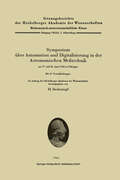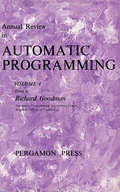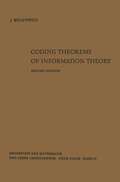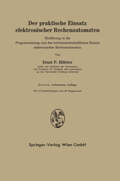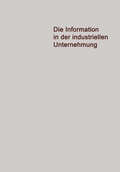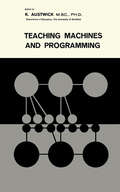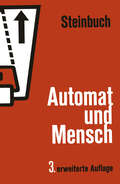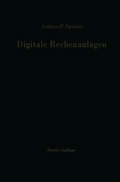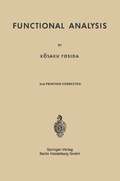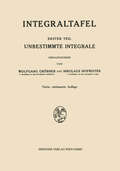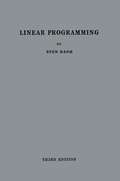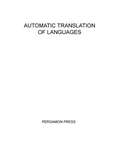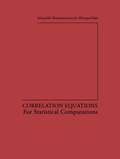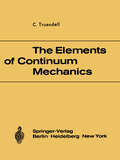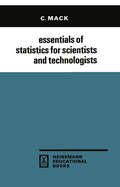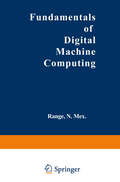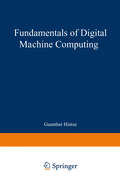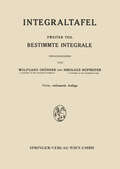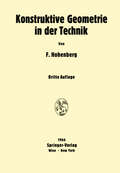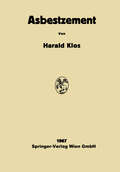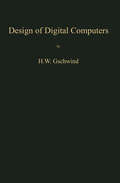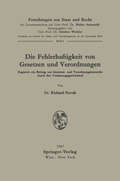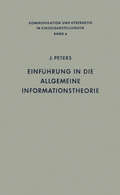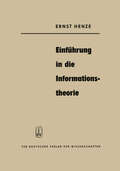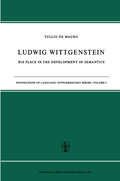- Table View
- List View
Symposium über Automation und Digitalisierung in der Astronomischen Meßtechnik am 27. und 28. April 1962 in Tübingen (Sitzungsberichte der Heidelberger Akademie der Wissenschaften #1962-64 / 2)
by Heinrich SiedentopfAnnual Review in Automatic Programming: International Tracts in Computer Science and Technology and Their Application, Vol. 4
by Richard GoodmanAnnual Review in Automatic Programming, Volume 4 is a collection of papers that deals with the GIER ALGOL compiler, a parameterized compiler based on mechanical linguistics, and the JOVIAL language. A couple of papers describes a commercial use of stacks, an IBM system, and what an ideal computer program support system should be. One paper reviews the system of compilation, the development of a more advanced language, programming techniques, machine independence, and program transfer to other machines. Another paper describes the ALGOL 60 system for the GIER machine including running ALGOL programs, storage allocation, addressing of variables, program references, procedure calls, storage problem of the translator, and writing the translator. Another paper investigates the internal operation of the ALGOL translator, the source and target languages, the parts of the translator, Polish postfix notation, symbol table in the translator, and the realization of the stack concept. One paper examines the components for a large digital computer, specific features, and compares these to IBM's IBSYS. The collection will prove valuable for programmers, computer engineers, computer instructors, and students of computer science.
Coding Theorems of Information Theory (Ergebnisse der Mathematik und ihrer Grenzgebiete. 2. Folge #31)
by Jacob WolfowitzThe imminent exhaustion of the first printing of this monograph and the kind willingness of the publishers have presented me with the opportunity to correct a few minor misprints and to make a number of additions to the first edition. Some of these additions are in the form of remarks scattered throughout the monograph. The principal additions are Chapter 11, most of Section 6. 6 (inc1uding Theorem 6. 6. 2), Sections 6. 7, 7. 7, and 4. 9. It has been impossible to inc1ude all the novel and inter esting results which have appeared in the last three years. I hope to inc1ude these in a new edition or a new monograph, to be written in a few years when the main new currents of research are more clearly visible. There are now several instances where, in the first edition, only a weak converse was proved, and, in the present edition, the proof of a strong converse is given. Where the proof of the weaker theorem em ploys a method of general application and interest it has been retained and is given along with the proof of the stronger result. This is wholly in accord with the purpose of the present monograph, which is not only to prove the principal coding theorems but also, while doing so, to acquaint the reader with the most fruitful and interesting ideas and methods used in the theory. I am indebted to Dr.
Der praktische Einsatz elektronischer Rechenautomaten: Einführung in die Programmierung und den betriebswirtschaftlichen Einsatz elektronischer Rechenautomaten
by Ernst P. BilleterDie Information in der Industriellen Unternehmung: Grundzüge einer Organisationstheorie für elektronische Datenverarbeitung (Veröffentlichungen der Schmalenbach-Gesellschaft #35)
by Jürgen PietzschTeaching Machines and Programming
by K. AustwickTeaching Machines and Programming covers the significant developments in teaching machines and automated teaching, as well as the major theoretical issues and attributes involved in these procedures. After a brief introduction to teaching machine procedures, this six-chapter text goes on summarizing the industrial and military applications of teaching machines. The succeeding chapters consider the underlying theory, function, and schema of the adaptive teaching system, which are related to recognizable teaching functions performed by a human tutor. The last chapters discuss the development and features of linear programs and their application as new teaching aid. These chapters also look into some practical problems arising in programming for schools. This book will prove useful to computer programmers, school administrators, teachers, and students.
Digitale Rechenanlagen: Grundlagen / Schaltungstechnik / Arbeitsweise Betriebssicherheit
by Ambros P. SpeiserLinear Programming in Industry: Theory and Applications. An Introduction
by Sven DanoThe present volume is intended to serve a twofold purpose. First, it provides a university text of Linear Programming for students of economics or operations research interested in the theory of production and cost and its practical applications; secondly, it is the author's hope that engineers, business executives, managers, and others responsible for the organization and planning of industrial operations may find the book useful as an introduction to Linear Programming methods and techniques. Despite the different backgrounds of these categories of potential readerR, their respective fields overlap to a considerable extent; both are concerned with economic optimization problems, and the use of Linear Programming to problems of production planning is simply applied theory of production. The non-economist reader may, but should not, pass over Chapter IV in which the linear production model is linked up with the economic theory of production. Without being an advanced text, the book aims at covering enough ground to make the reader capable of detecting, formulating, and solving such linear planning problems as he may encounter within his particular field. No heavy demands are made on the reader's mathematical profi ciency; except for the proofs in the Appendix-which may be skipped if desired-the mathematical exposition is purely elementary, involving only simple linear relations. In the author's experience, the pedagogical advantages of thi;:; approach, as compared with the use of matrix algebra, amply justify the sacrifice of mathematical elegance and typographical simplicity, particularly in explaining the simplex method.
Automatic Translation of Languages: Papers Presented at NATO Summer School Held in Venice, July 1962
by Aldo GhizzettiAutomatic Translation of Languages is a collection of papers that discusses the various concerns in automatic language translation systems. The text first covers algebraic linguistics and machine translation, and then proceeds to tackling the main concepts in automatic translation of languages. Next, the selection deals with the equivalence of models of language used in the fields of mechanical translation and information retrieval. The text also discusses computational procedure in linguistic research. The next chapters detail syntax and syntactic integration. The book will be of great use to scientists and professionals who involved in the research and development of computerized language translation systems.
Correlation Equations: For Statistical Computations
by Aristarkh K. Mitropol skiiThis book presents methods for computing correlation equations. All the topics treated hefe are eluci dated in terms of concrete examples, which have been chosen, for the most part, from the Held of analysis of the mechanical properties of steel, wood, and other materials. A necessary prerequisite for any study of correlation equations is so me knowledge of the moments of random variables. In the Appendix, there is provided a brief treatment of moments, as well as a discussion of the simplest methods of computing them. We have paid particular attention in this book to the techniques of computing correlation equations, and to the use of tables for alleviating the computationalload. The mathematical bases of the methods used in setting up correlation equations are expounded in the books cited at the end of this volume. A. M. December 1965 PIe ase note that the abbreviation 19 is used in this book to designate the logarithm to base ten, Note further that the comma has been retained as the decimal point in tabular material.
The Elements of Continuum Mechanics: Lectures given in August - September 1965 for the Department of Mechanical and Aerospace Engineering Syracuse University Syracuse, New York
by C. TruesdellThe lectures here reported were first delivered in August and September, 1965, for the Department of Mechanical and Aerospace Engi neering at syracuse University, New York under the sponsorship of the New York State Science and Technology Foundation. Lectures 1-6 and 22-23 are revised from a version prepared by Professor Kin N. Tong on the basis of a transcription of the lectures, kindly provided by Professor S. Eskinazi. The remainder of th~ text has been written out afresh from my own notes. Much of the same ground was covered in my lectures to the Austra lian Mathematical Society's Summer Research Institute at Melbourne in January and February, 1966, and for the parts affected the text conforms to this latter presentation. I am grateful to Professors C.-C. Wang and K. N. Tong for criticism of the manuscript. These lectures constitute a course, not a treatise. Names are attached to theorems justly, to the best of my knowledge, but are not intended to replace a history of the subject or references to the sources.
Essentials of Statistics for Scientists and Technologists
by C. MackStatistics is of ever-increasing importance in Science and Technology and this book presents the essentials of the subject in a form suitable either as the basis of a course of lectures or to be read and/or used on its own. It assumes very little in the way of mathematical knowledge-just the ability to substitute numerically in a few simple formulae. However, some mathematical proofs are outlined or given in full to illustrate the derivation of the subject; these can be omitted without loss of understanding. The book does aim at making clear the scope and nature of those essential tests and methods that a scientist or technologist is likely to need; to this end each chapter has been divided into sections with their own subheadings and some effort has been made to make the text unambiguous (if any reader finds a misleading point anywhere I hope he will write to me about it). Also with this aim in view, the equality of probability to proportion of population is stated early, then the normal distribution and the taking of samples is discussed. This occupies the first five chapters. With the principles of these chapters understood, the student can immediately learn the significance tests of Chapter 6 and, if he needs it, the analysis of variance of Chapter 7. For some scientists this will be most of what they need. However, they will be in a position to read and/or use the remaining chapters without undue difficulty.
Integraltafel: Zweiter Teil Bestimmte Integrale
by Wolfgang Gröbner Nikolaus HofreiterDer zweite Teil der Integraltafel, welcher die bestimmten Integrale umfaßt, gleicht in seinem Aufbau dem ersten Teil. Er enthält vor allem solche Integrale, die im ersten Teil nicht vorkommen, weil die betreffenden Integralfunktionen nicht näher bekannt oder nicht tabelliert sind, so daß nur bei speziellen Grenzen bekannte Zahlwerte oder bekannteParameterfunktionen auftreten. Um jedoch praktischen Bedürfnissen entgegenzukommen, wurden auch viele Integrale, die schon im ersten Teil verzeichnet sind, für spezielle, besonders häufig auftretende Grenzen berechnet und in den zweiten Teil mit aufgenommen. Noch mehr als im ersten war im zweiten Teil die Frage der richtigen Abgrenzung des Stoffes schwer zu lösen; es ist kaum möglich, hier allen Ansprüchen gerecht zu werden, ohne den Umfang der Tafel über Gebühr anschwellen zu lassen. Wir haben uns daher in allen Fällen bemüht, durch Einführung von Parametern möglichst viele gleichartige Integrale zusammenzufassen; das erleichtert zugleich die Übersicht, zieht andererseits aber die Unbequemlichkeit mit sich, daß der gerade ge suchte Integralwert nicht unmittelbar abgelesen werden kann, sondern erst durch Einsetzen der passenden Parameterwerte ermittelt werden muß. In einzelnen wichtigeren Fällen haben wir jedoch zur allgemeinen Formel noch eine Reihe von speziellen für besondere Parameterwerte hinzugefügt.
Asbestzement: Technologie und Projektierung
by Harald KlosIn Gesprächen mit Asbestzement-Erzeugern, Betriebsleitern, Betriebs leuten und Technologen sowie mit auf diesem Gebiet tätigen Maschinen bauern, Projektanten, Konstrukteuren und für die Inbetriebsetzung ver antwortlichen Technikern konnte ich immer wieder feststellen, wie sehr das Fehlen ausreichender Literatur über Asbestzement als Mangel empfunden wird. Dabei konnte ich zusätzlich feststellen, daß selbst die vorhandene Asbestzement-Literatur viel zuwenig bekannt ist. Daraus resultierte mein Entschluß, manohes, was in der Literatur aufzufinden war, sowie einiges von den Erfahrungen, die ich als projektierender und konstruierender Ingenieur bei der Inbetriebsetzung mehrerer Anlagen und in Gesprächen mit Kunden und Interessenten gesammelt hatte, systematisch zu ordnen und in Form des vorliegenden Buches einem größeren Kreise zugänglich zu machen. Das Buch wendet sich in erster Linie an den praktisch tätigen Ingenieur. Von diesem Gesichtspunkt aus habe ich jene Abschnitte kürzer gehalten, die für den Praktiker von geringerer Bedeutung sind, und habe bewußt auf die Behandlung allzu spezieller Probleme verzichtet. Die Asbesttechnologie enthält noch viele Fragen, die nicht restlos geklärt sind. Meine Darstellung, die sich weitgehend auf eigene Erfahrungen stützt, ist daher an manchen Stellen notwendigerweise subjektiv. Ich hoffe jedoch, daß dies kein Mangel ist.
Die Fehlerhaftigkeit von Gesetzen und Verordnungen: Zugleich ein Beitrag zur Gesetzes- und Verordnungskontrolle durch den Verfassungsgerichtshof (Forschungen aus Staat und Recht #5)
by Richard NovakDie »Forschungen aus Staat und Recht" sind WALTER ANTONIOLLI gewidmet. Er hat als Forscher und Lehrer den eigentlichen AnstoB zu einer Erneuerung des Denkens auf den Gebieten des offentlichen Rechts und der Staatslehre in Osterreich gegeben. Schuler und Freunde haben es ihm zu danken, daB er ihnen den Weg zu methodischen Auffassun gen gewiesen hat, die aus dem engen Formalismus herausfiihren. Dar aus erkHirt es sich, daB die Forschungsreihe unverkennbar von methodi schen Anliegen gepdigt ist. Diese zeigen sich auch in jenen Untersuchun gen, die spezielle Themen zum Gegenstand haben. Die vorliegenden und die geplanten Abhandlungen verbindet das Bestreben zu einer Einheit, mit allen Mitteln der Erkenntnis zur Erforschung von Staat und Recht in wissenschaftlich-selbstkritischer Weise beizutragen. Darin liegt gleichzeitig eine offene Absage an ein ideologisierendes Rechtsden ken einerseits und an eine verengte formalisierende Methode anderer seits. In diesem Sinn ist die Forschungsreihe nicht nur als ein Zeichen offentlichen Dankes an WALTER ANTONIOLLI, sondern auch als ein wissenschaftliches Bekenntnis gedacht. Seit Jahren liegt die Veroffentlichung von Monographien auf den Gebieten des offentlichen Rechts und der Staatslehre im argen. Die durch das vorgegebene Absatzgebiet gebotene Beschrankung jeder Auf lage machte ihre Herstellung ohne fremde Mittel geradezu unmoglich. Private und offentliche Stellen zeigten sich dieser Notlage gegenuber aufgeschlossen und unterstutzten durch groBzugige Forderung dieses fiir die wissenschaftliche Diskussion wie fur die Praxis gleicherma6en wichtige Vorhaben. Ihnen sei an dieser Stelle aufrichtig gedankt.
Einführung in die allgemeine Informationstheorie (Communication and Cybernetics #6)
by Johannes PetersLudwig Wittgenstein: His Place in the Development of Semantics (Foundations of Language Supplementary Series #3)
by T. De MauroVarious students of general linguistics and semantics quote and discuss Wittgenstein, among others, OGDEN and RICHARDS (1960), ULLMANN (1951, 1962), PAGLIARO (1952, 1957), WELLS (1960), REGNELL (1960) and 1 ZIFF (1960). For the most part however they quote the Tractatus and not 2 the Philosophical Investigations ; not all of them consider the most important ideas in the Tractatus but often discuss marginal points; above all they often make the discussion of Wittgenstein's ideas secondary to the development of their own thought. It should be added, moreover, that these students are exceptions. The large majority of language theorists, especially those with a philological background, have almost no know ledge of Wittgenstein's ideas. One scholar thinks that Wittgenstein's linguistic philosophy rests upon a grotesque misunderstanding of the workings of language (HERDAN, 1962, Chapter 24). The present book seeks to draw the attention of students of general linguistics and semantics to the thought of both the early and the later Wittgenstein: not only the Philosophical Investigations but also the Tractatus is concerned with everyday language: Wittgenstein was thinking of the propositions of everyday language, when he affirmed that the proposition is a picture of reality (Chapter 1). This conception is very old, it is in fact found in Aristotle and it dominated ancient, mediaeval and modern rationalistic thought; only Locke, Vico and Leibniz criticized it strongly (Chapter 2).
